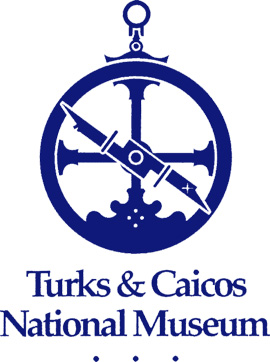Turks & Caicos National Museum Grand Turk, Turks and Caicos Islands
The Turks and Caicos National Museum Foundation is a nonprofit organization founded in 1991. Situated on Grand Turk, the capital of the Turks and Caicos Islands, the museum is housed in the lovely "Guinep House," built in the early 1800s, aptly named for the large Guinep trees found in the front garden.
The first floor of the museum houses the Molasses Reef Wreck, the oldest shipwreck found in the Western Hemisphere, dating to 1513. The museum houses the complete assemblage of conserved artifacts from this famous wreck, including cannons and shot, wooden hull pieces, surgical implements, bowls and storage jars, carpentry tools, metal portions of the rigging, and tailoring tools. In addition, the museum has done extensive research on the slave ship Trouvadore and has published the following books by Nigel Sadler: Slave History in the Turks and Caicos Islands and The Slave Trade.
The Caicos Bank and the Turks Bank comprise a chain of forty cays at the southeastern end of the Bahamian Archipelago. These two banks have a shared history, but their development and use of enslaved labor was different. The islands provide a harsh environment to live in. With no high land, (the highest point being only 156 feet), there is little rainfall, with an average of only 26 inches a year. The annually high temperatures, which average between 80 and 90 degrees Fahrenheit, and the trade winds provide an ideal environment for quickly reclaiming any rainfall through evaporation. The lack of rain and thin soils, with a salt-water water table, deter the growth of crops, and what does grow quickly depletes the soils. The only useful natural products are salt, cotton, and sea life.
The nature of the islands and its political control have meant that most documentation and objects relating to their history have deteriorated or have been lost on the Turks and Caicos Islands: the salty air, high humidity, occasional hurricanes, and flooding have seen to this. However, all official documentation appears to have been carried out in duplicate or triplicate, with one copy staying in the Turks and Caicos Islands (now lost), one copy going to the country in the region that was overseeing the territory (Bahamas, from 1767 to 1848 and Jamaica, from 1873 to 1962) and one copy being sent back to the United Kingdom.
As a result, much information related to the Turks and Caicos Islands exists within the archives in Jamaica and Bahamas, as well as a full set of official records held at the Public Record Office at Kew in London. There are also holdings in the Bermudan Archives. In addition, information is held in private family records and could also exist in the official archives of the Turks and Caicos Islands, which are in decay in temporary storage.
The opening of the National Museum in 1991 and the subsequent opening of its Science Building in 1997 have encouraged more research to be undertaken, and it was this institution that was given the task of coordinating the data collection for the UNESCO/WTO joint Caribbean Programme of Cultural Tourism On the Slave Route Project. Through grants and donations, the museum is slowly building up a local studies library and archive, which includes mainstream publications, research papers, and the purchase of microfilms of material held in overseas archives.






